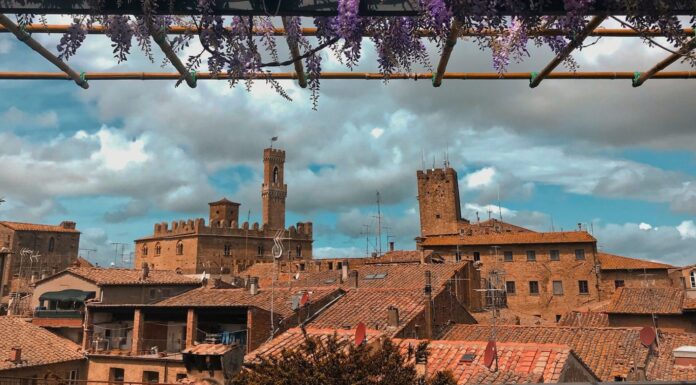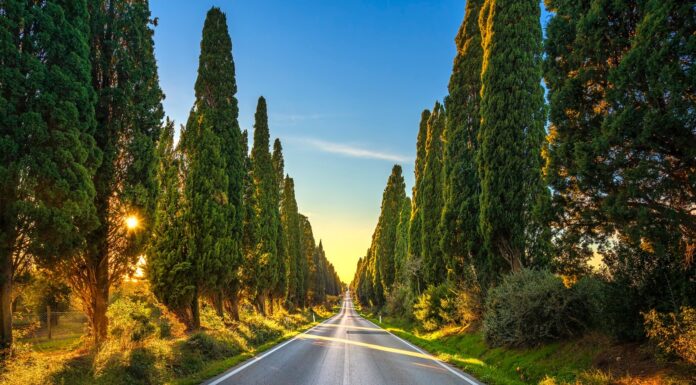Etruscan Cities deserve a spot on any Tuscan vacation itinerary. I love following these ancient sites in my travels through central Italy, allowing them to lead me to the charming towns nearby, incredible hikes through ancient roads, and fascinating glimpses of history.
The sites of Etruscan cities are full of ruins and archeological sites. You’ll easily find hundreds of tombs, temples, remnants of industries, tumuli burial mounds, and grottos. Where sites are located, there’s usually a museum or two nearby showcasing the main artifacts from that location. The museums are located in quintessential, small Tuscan towns… ready to offer you the perfect piazza for an afternoon coffee or a charming hotel.
Let these Etruscan Cities guide you through Tuscany (or maybe beyond)! Let’s take a look at who the Etruscans were, what all the hype with their cities is about, and some key spots for your itinerary.
The 12 Cities of the Etruscan League

Etruscan cities were organized into lega dei popoli, or leagues of people. These were groups of towns similar to Greek city-states that worked as a confederation. There were likely several and their members were often shifting, but the three biggest were: one centered around Capua in modern-day Campania, one in the Po Valley, and one – the most famous – a dodecapoli of 12 cities. The number 12 may be more symbolic than literal, there is not a total consensus on which towns were part of the league. However, there is a list that is generally considered the dodecapoli:
- Arretium (Arezzo)
- Caisra (Cerveteri and its frazione, Ceri)
- Clevsin (Chiusi)
- Curtun (Cortona)
- Felathri or Velathri (Volterra)
- Perusna (Perugia)
- Pupluna (Populonia)
- Tarchna (Tarquinia/Corneto)
- Vetluna (Vetulonia)
- Veii (Veio)
- Velzna (Bolsena)
- Velch (Volci)
Top 7 Etruscan Cities in Tuscany: An Insight into Ancient Times
There are so many incredible Etruscan sites in Tuscany, how could you ever choose? Here are our top seven to help narrow down your choices.
1. Volterra: The Town of Alabaster
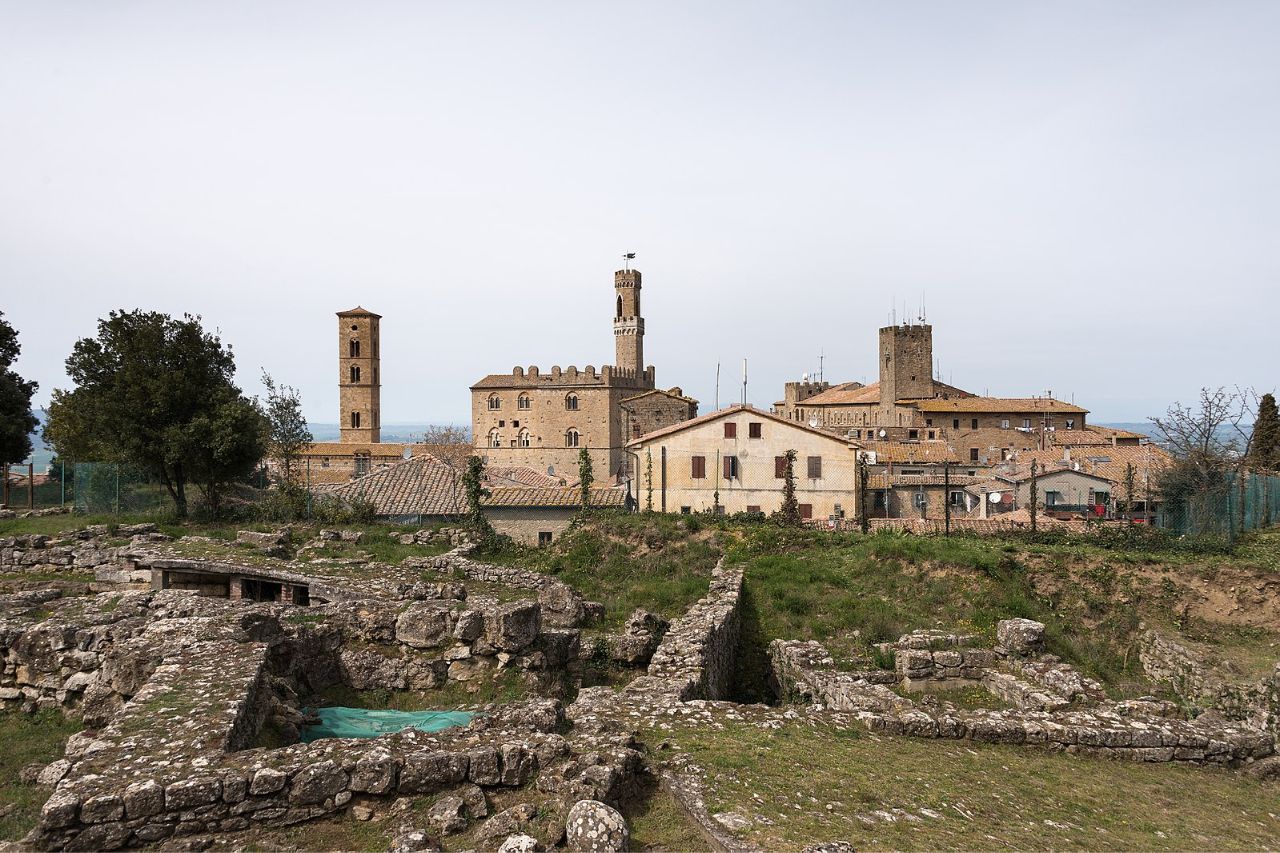
Likely one of the 12 Etruscan league cities, Volterra is a walled hilltop town. You can still view the Etruscan walls of the town, or visit the Guarnacci Etruscan Museum. Volterra also has a special connection to the mineral alabaster, which was the Etruscan’s preferred material for urns, vases, and sculptures due to its durability and beauty. More recently, artisans in Volterra have revitalized the craft, and visitors to the city even have a chance to visit a museum dedicated to it.
Explore more: Towns in Tuscany – 15 Jewels of Italy’s Rich Culture
2. Cortona: The Jewel of the Val di Chiana
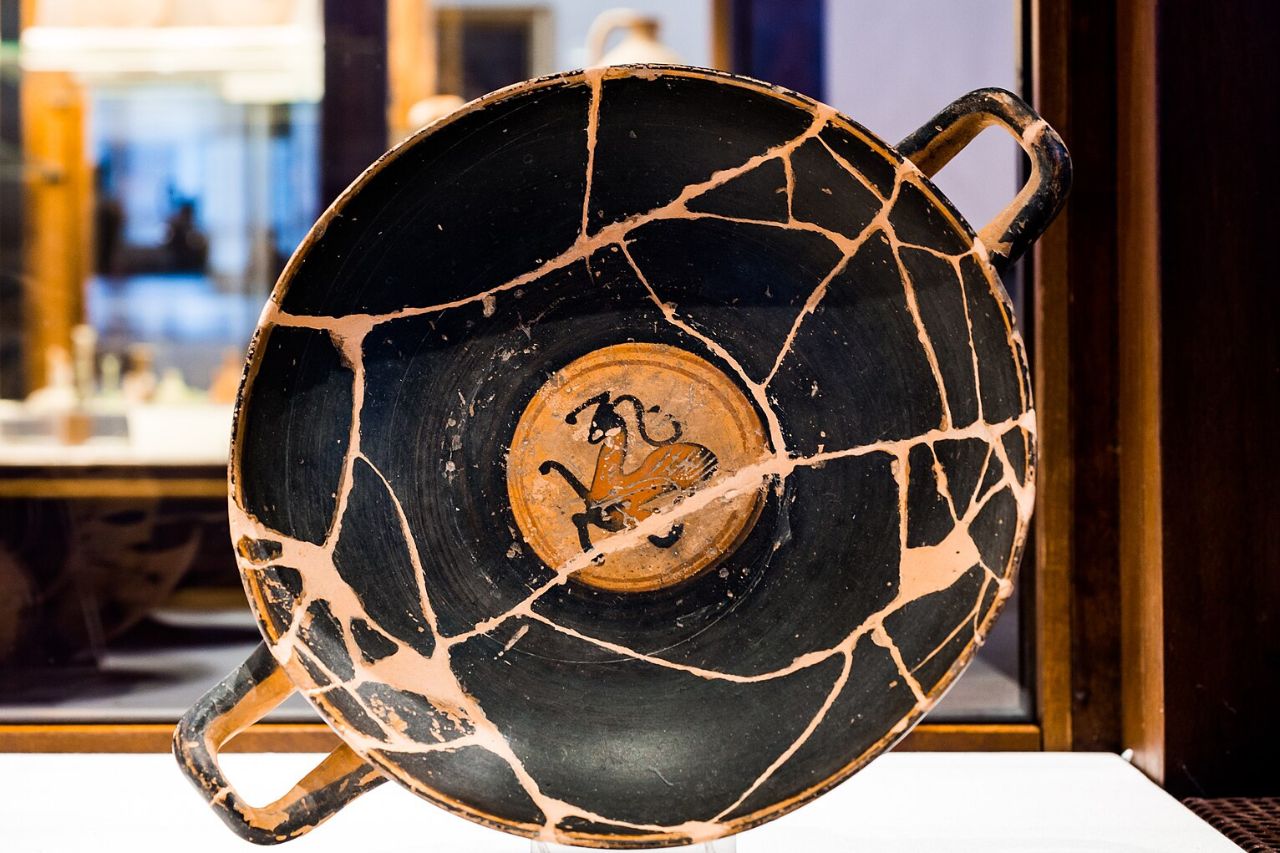
From its hamlets to its city walls and gates (in Etruscan times, there were 10!), Cortona is a town rich in ancient history. The Etruscan Academy Museum of the City of Cortona and its archaeological park are absolutely worth a stop and contain incredible sites of both Etruscan and Roman origin. The tombs nearby the town, from which many of the artifacts in the museum were sourced, can be visited in coordination with the museum or by organized tour.
Explore More: Cortona, Italy – A Picturesque Tuscan Town
3. Arezzo: The City of the Etruscan “Chimera”
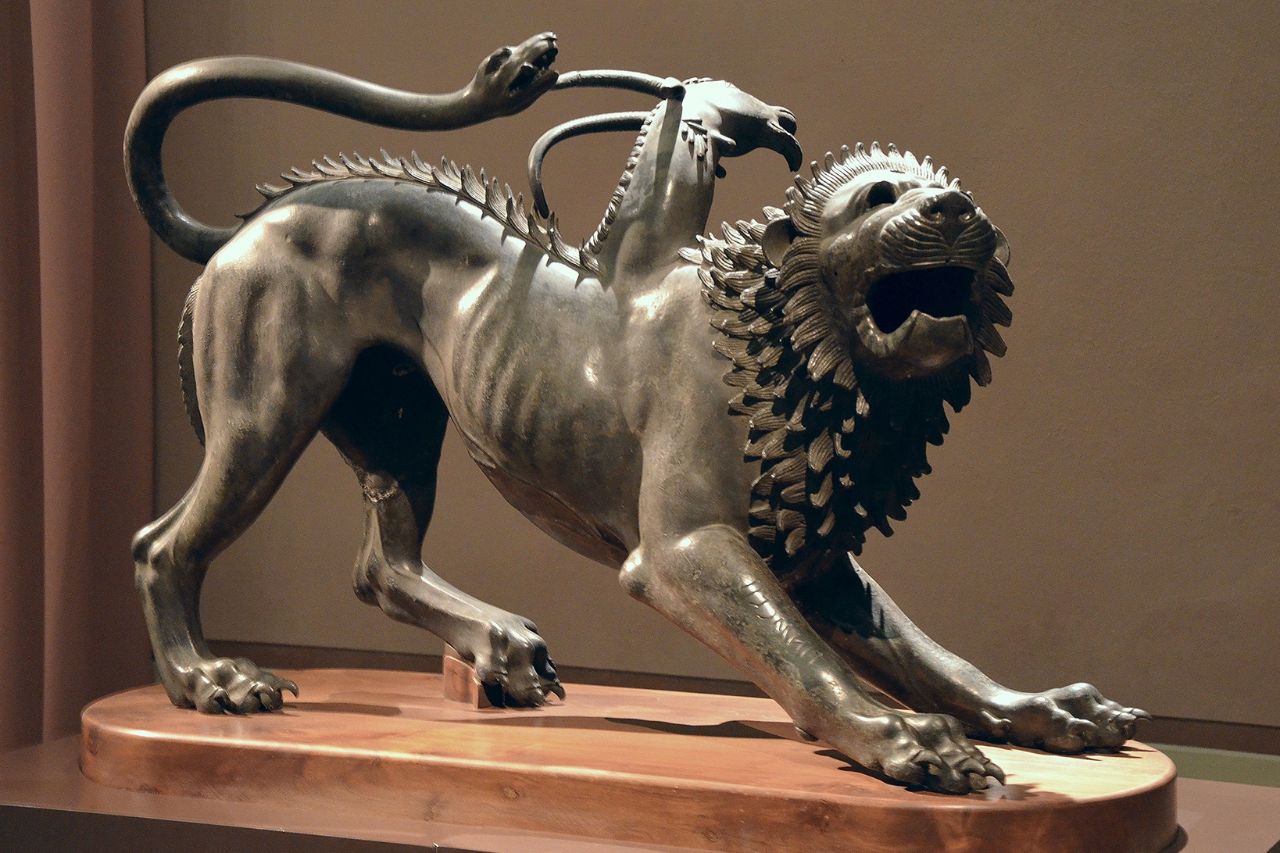
The Chimera of Arezzo is a stunning and historically pivotal Etruscan artifact, found along with other bronze statues in Arezzo. Likely an offering to Tinia, the god of the sky and the ruler of Etruscan mythology, the status alludes to the Greek story of the hero Bellerophon’s defeat of the Chimera – a monster made up of parts of various animals.
It is now on display at the National Archaeological Museum in Florence, but Arezzo has its own archeological museum, the Museo Archeologico Statale Gaio Cilnio Mecenate which is located in an old monastery built over a Roman amphitheater.
Arezzo makes a great day trip from Florence!
4. Chiusi: A Glimpse into the Etruscan Underworld
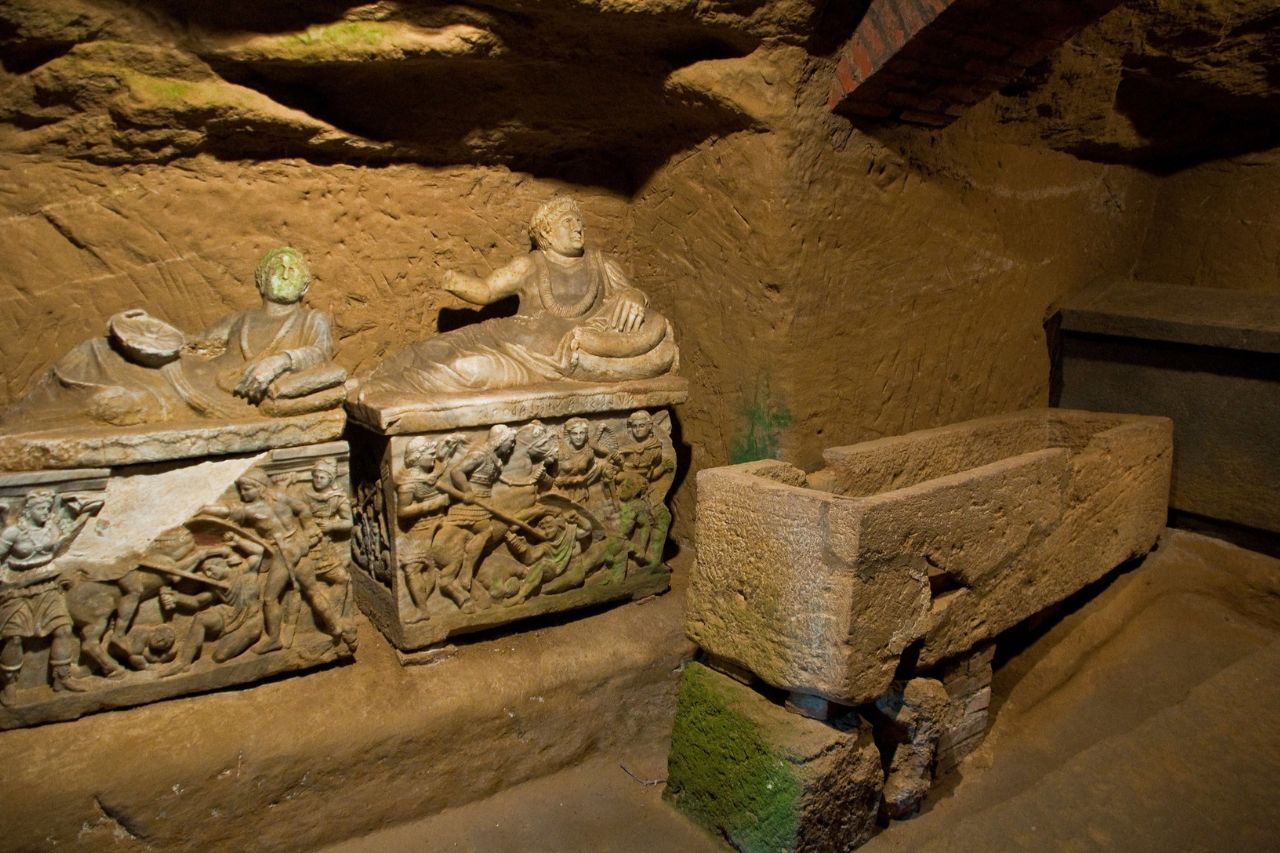
One of the most powerful Etruscan cities, Chiusi is now known for its painted tombs sites – about 15 of them are located near the town! The most well-known are the Tomb of Colle Casuccini and the Necropoli di Poggio Renzo, which contains the Tomb of the Grand Duke, Tomb of the Lion, Tomb of the Inscription, Tomb of the Pilgrim, Tomb of the Monkey, and Tomb of Orientalizing Style. Some of these tombs are currently closed to the public, the Museo Nazionale Etrusco of Chiusi will be able to provide visitor information.
5. Populonia: The Etruscan Coastal Stronghold
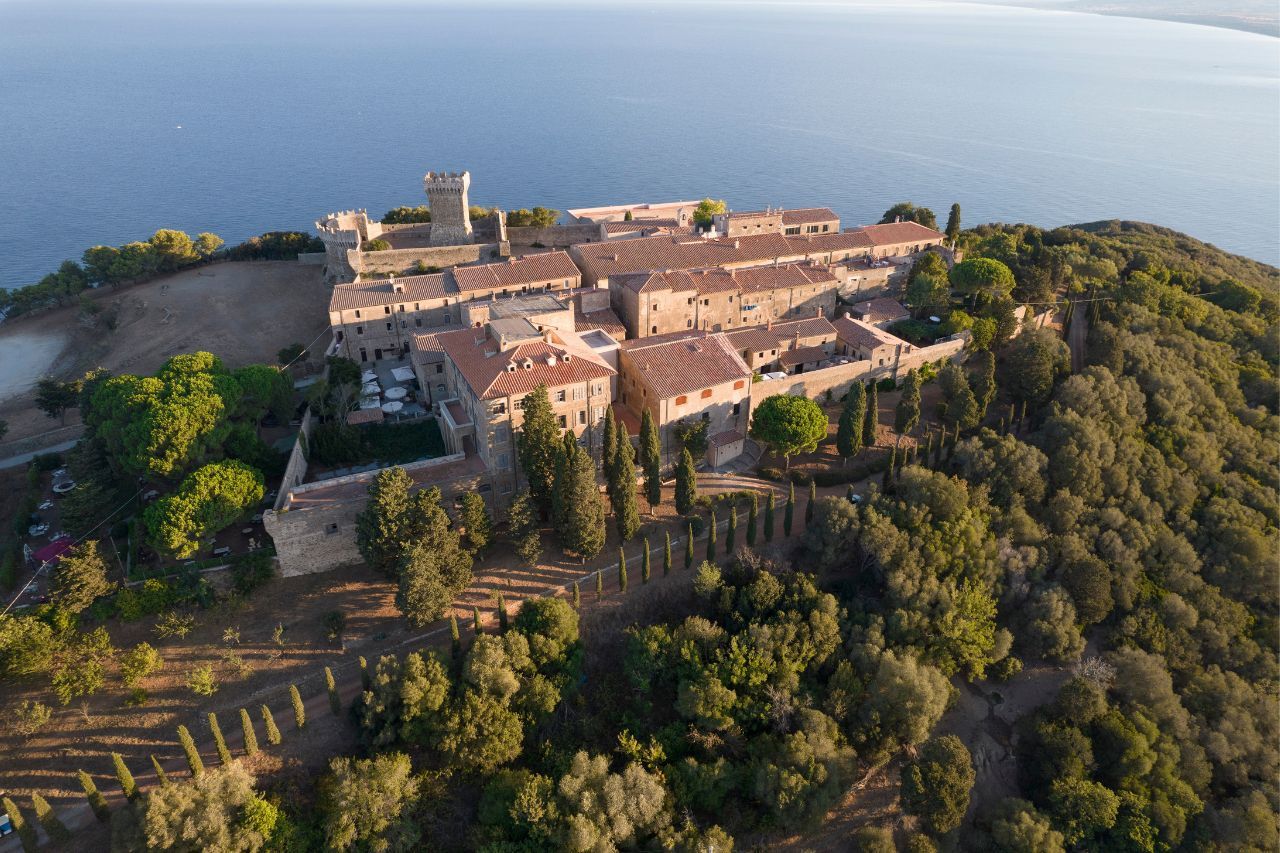
Usually, Etruscan cities were found inland, but Populonia is located by the sea and contains one of the main necropolis found in Italy, the San Cerbone necropolis. You can check out the town’s archaeological park, a marvelous open-air museum that follows the original roads through the remains of the ancient town. Here you will find ruins of residences and temples, industries, tumuli burial mounds, grottos, and tombs. Notably, don’t miss The Tomb of the Bronze Statuette of the Offering Bearer.
6. Vetulonia: The City of Golden Treasures
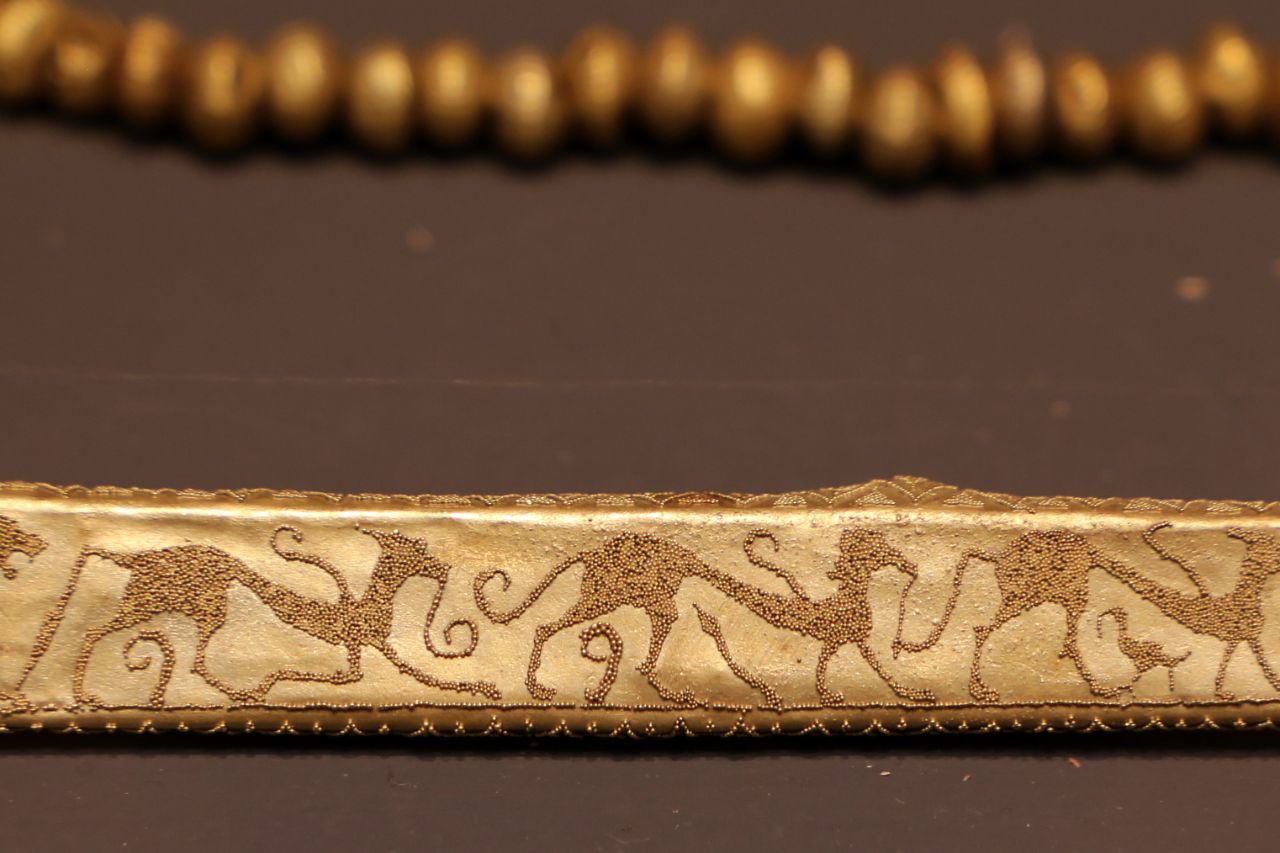
The Etruscan city of Vetulonia was hidden for a very long time, discovered only in the late 19th century by a local doctor and amateur archaeologist. A Museum of Vetulonia was named after its discoverer, Isidoro Falchi: the Museo Civico Archeologico Isidoro Falchi di Vetulonia.
Vetulonia was famous for its goldsmiths, and the tombs discovered there held an abundance of gold treasures: earrings, brooches, necklaces, bracelets, rings, and statues.
If you visit Vetulonia, don’t miss the opportunity to also see Roselle, another Etruscan city only about nine miles away.
7. Sovana: The Necropolis and the Etruscan Vie Cave
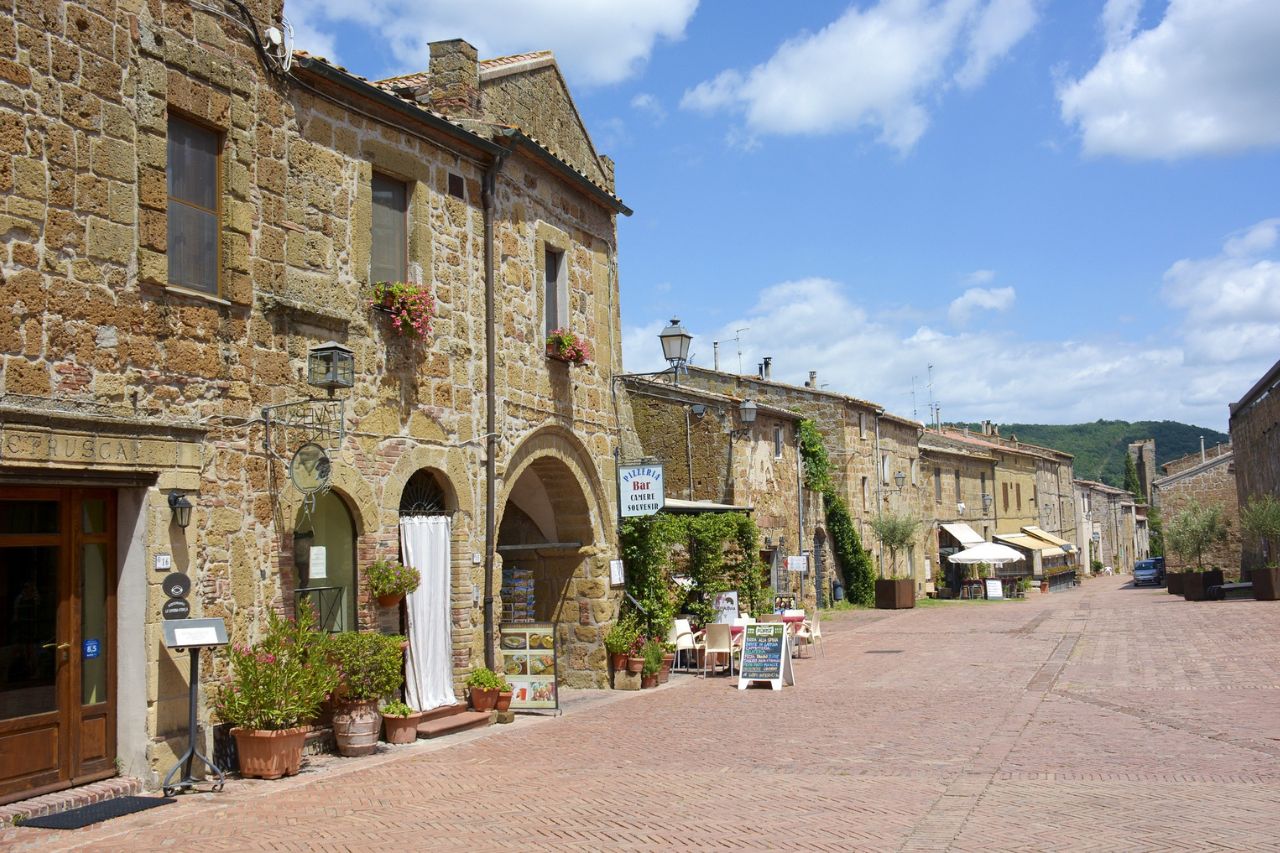
The tombs in the necropolis at Sovana are unique because they span a very wide range of styles and eras. The town of Sovana itself is also very charming!
Famous sites in the Etruscan city of Sovana include the Tomb of the Winged Demons, the Tomb of the Mermaid, the Tomb of Idelbranda, the Grotta Pola, and the Tomb of the Typhon. The site is centered around an altar of a female goddess of health.
The roads and many of the tombs are carved right into the tuffaceous rock. The sites in Sovana and those in nearby Sorano (also worth a visit!) and Pitigliano are linked by these carved roads, which are called Vie Cave. The Parco Archeologico Città del Tufo offers information and guidance on these sites.
Etruscan Cities and Their Cultural Value
Though Ancient Rome may first come to mind when considering the ancient history of Italy, the Romans’ culture was heavily influenced by the Etruscans, also known as the Tyrrhenians. From gladiator fights to hydraulic engineering and religious motifs, many Roman cultural pillars are actually Etruscan in origin.
Even Rome itself flourished from a small village settlement into a bustling city under the Etruscans. The city eventually gained independence, sparking the force known as the Roman Empire. The Etruscan civilization started around 900 BC, peaked around 750 BC, and was finally absorbed by Roman culture through 27 BC.
The Etruscans were an ancient people of the area called Etruria, an old region of central Italy. Wealthy Etruscans traded and fought with Celts and Greeks, as well as mined the mineral resources of the region, especially Tuscany. The Etruscans lived along the Tyrrhenian coast between the Arno and Tiber Rivers, primarily in present-day Tuscany and Lazio but stretching from present-day Campania to the Po Valley.
Etruscan cities were politically autonomous states, connected by language and cultural traditions. Exploring the sites of Etruscan Cities offers a unique look into the lesser-known ancient cultural sites of Italy.
Making The Most of Your Etruscan City Adventure
Best Time to Visit
When planning when you want to visit Etruscan cities in Tuscany, the “shoulder season” is often a reliable choice. Traveling in spring or fall avoids peak crowds and shop closures during the off-season.
Read more about timing a trip to Tuscany here.
Guided Tours And Experiences
There are so many Etruscan sites to see, both across central Italy as well as within each city’s site. A guided tour can be a great way to learn and adventure at the same time!
- The Cortona Archaeological Tour is included with a museum ticket to the Etruscan Academy Museum of the City of Cortona. This tour is a medium-difficult trek from two Etruscan tombs in Sodo outside of Cortona, passing through the Meloni burial mounds. After that, you will reach the ancient piazzas at the center of Cortona and the museum.
- For a more expansive and all-encompassing educational experience, The Archaeological Institute of America offers a tour of Etruscan sites. It covers large cities, necropolis, lesser-known sites, and smaller towns and includes visits to museums and lectures. Four-star hotel stays, as well as food and wine, are included.
Exploring Beyond Tuscany: Other Etruscan Cities in Italy
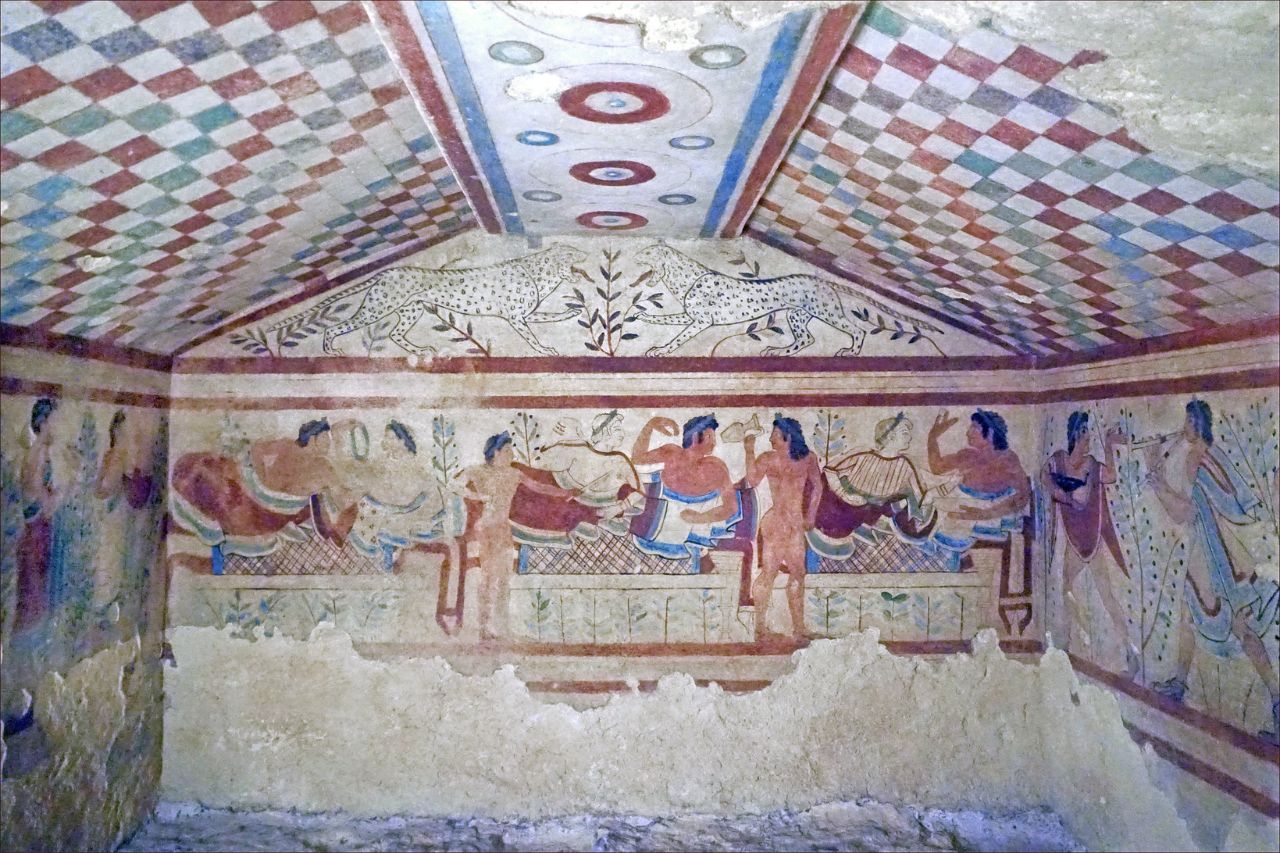
Venturing beyond Tuscany? Here are two Etruscan cities that we recommend including in your itinerary!
Orvieto and the Etruscan Necropolis
If you’re traveling in Umbria, Orvieto has a famous necropolis called “Crocifisso del Tufo“ with over 200 tombs made of the local tuffaceous rock, as well as the ruins of the Temple of Belvedere. At the Claudio Faina Museum and National Archaeological Museum of Orvieto, you can see artifacts found in the local sites, including reconstructed tombs, funeral items, the front of the Belvedere Temple, and Bucchero (Etruscan black pottery).
Tarquinia: The City of Painted Tombs
The immense necropolis at Tarquinia, located in Lazio, contains over 6000 graves cut into rock… 200 of which are painted! This necropolis is one of the largest and most well-known. Even today, archives still hold sketches from Renaissance artist Michelangelo, who visited this site..


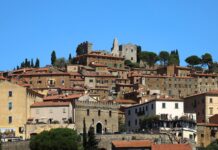
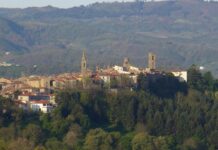
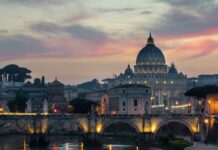




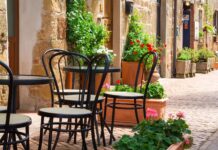

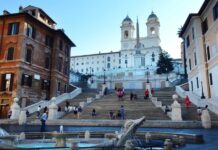
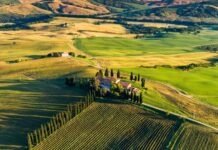
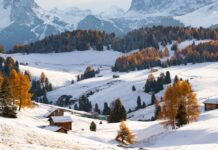
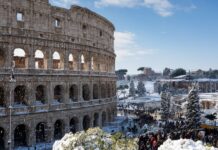
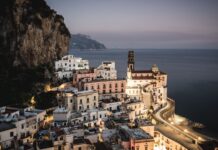
![etruscan-cities-1[1] Etruscan Cities in Tuscany](https://italytravelsecrets.com/wp-content/uploads/2023/07/etruscan-cities-11-1068x542.jpg)
